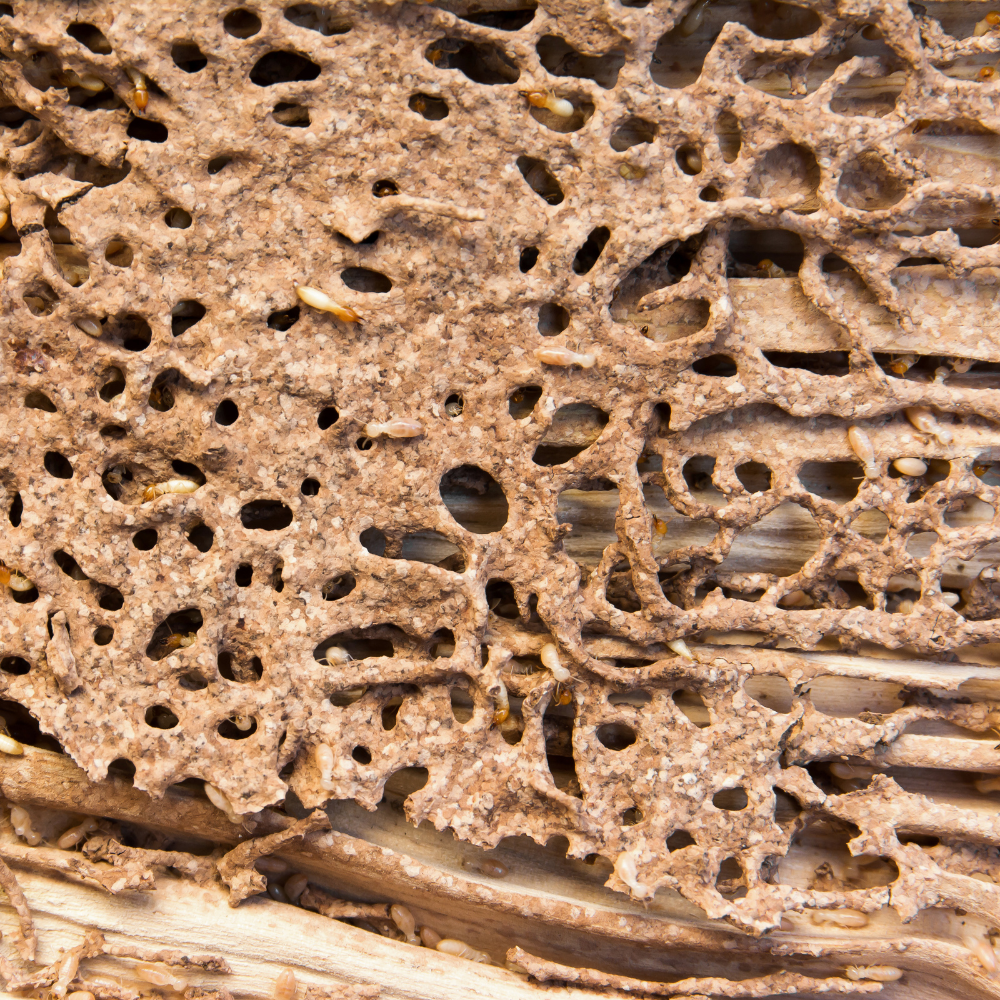How to Differentiate Between Termite Damage and Wood Rot
Wood deterioration in homes is never something to ignore, but not all damage has the same root cause. One culprit is moisture, which leads to decay through fungi, known as wood rot. The other is something more insidious: termites, which silently hollow out structures from the inside. Although they may look similar at first glance, termite damage and wood rot require completely different solutions.
Misdiagnosing the source of wood damage can delay the right treatment, making repairs more expensive and invasive down the line. This article will walk you through how to spot the difference, what causes each type of damage, and why acting quickly matters. For California residents, environmental conditions like wildfires and droughts can increase the risk for both issues. Knowing how to distinguish them is the first step in preserving your home’s structural integrity.

Signs of Termite Damage: What to Look For
Termite damage typically occurs from the inside out, making it more difficult to spot early. However, there are key visual and tactile signs that suggest termites are the issue:
- Hollow-sounding wood: When tapped, areas affected by termites may sound thin or papery due to internal tunneling.
- Mud tubes: These pencil-sized tunnels on walls or foundations are used by subterranean termites to travel without drying out.
- Frass (termite droppings): Drywood termites leave behind wood-colored pellets that resemble sawdust.
- Buckling paint or swollen wood: Moisture from termites’ activity can cause paint to bubble or wood to warp.
- Maze-like patterns in wood: Cutting into damaged areas may reveal galleries or tunnels that run along the wood grain.
Unlike rot, termite infestations are dynamic and expanding. Catching these early can prevent wider structural compromise, especially in vulnerable regions already affected by drought conditions.
What Causes Wood Rot and How It Spreads
Wood rot is caused by fungi that thrive in moist, oxygen-rich environments. Unlike termites, fungi need consistently damp conditions to survive and multiply. This makes rot predictable but equally damaging over time.
- Persistent moisture: Leaky pipes, roof issues, or poor drainage can keep wood wet long enough to invite fungi.
- Poor ventilation: Basements, crawl spaces, and attics with little airflow are hotspots for fungal growth.
- Soft texture and discoloration: Wood affected by rot often feels spongy and may appear darker, greenish, or white.
- Surface decay before internal damage: Fungi begin digesting the exterior cellulose first, leading to a soft, crumbling texture on the surface.
While wood rot doesn’t spread as rapidly as termites can tunnel, it can still compromise the same structural supports if not addressed. And in California, regions recovering from wildfire events may have changed moisture dynamics that make properties more susceptible to both issues.
Differences in Appearance and Texture
While both wood rot and termite damage can compromise a structure’s integrity, the signs they leave behind differ significantly in texture, color, and surface patterns. Careful observation can help you tell them apart before the damage escalates.
Color changes:
- Wood rot often creates visible discoloration. Wet rot tends to darken the wood or make it appear gray and water-stained. Dry rot may cause hues of yellow, white, or reddish-brown, depending on the fungal strain.
- Termite damage, however, doesn’t alter the wood’s external color. Damage is usually hidden inside and only becomes visible once the outer layer is broken, revealing pale, dry tunnels.
Texture and feel:
- Rotten wood feels soft, spongy, or even crumbly under pressure. You can often press into it with a tool or finger, especially in high-moisture areas.
- Termite-damaged wood stays dry and brittle. It may flake apart when prodded but will not feel damp or spongy. The wood breaks cleanly along tunnel lines rather than crumbling.
Damage pattern:
- Wood rot spreads irregularly. It begins on the surface and works its way inward, sometimes forming stringy or shredded fibers on the exterior.
- Termite galleries follow a linear, maze-like pattern inside the wood, parallel to the grain. The structure appears hollowed out and segmented but typically looks fine on the surface until it collapses.
Smell:
- Rotted wood has a musty, earthy odor due to fungal growth.
- Termite infestations typically do not produce any odor unless secondary mold develops in damp conditions.
Spotting these differences early allows for faster, more effective remediation. Whether the culprit is rot or termites, acting before structural integrity declines is crucial. When in doubt, an inspection by a trained eye is often the best next step.
Why Accurate Diagnosis Matters
Treating termite damage as wood rot or vice versa leads to ineffective repairs and allows the real issue to grow worse. Missteps not only waste time and money but also put your safety at risk.
For example, using anti-fungal sealants on termite-infested beams will do nothing to stop the colony from expanding. Similarly, applying pesticides to rotted wood ignores the underlying moisture issue that will continue to deteriorate your structure.
That’s why accurate assessment is key. Trained professionals use moisture meters, borescopes, and sometimes even thermal imaging to determine the source and extent of the problem. They know how to distinguish between superficial symptoms and hidden damage, something DIY inspections often miss.
Preventive care also becomes more targeted once you know the cause. Moisture issues can be resolved through better drainage, ventilation, or sealing. Termite threats may require bait stations, soil treatments, or wood replacement. Understanding the root cause sets the stage for smarter, longer-lasting repairs.
Don’t Guess and Get a Precise Answer
Not sure what’s damaging your wood? Whether you suspect termites or rot, it’s time for expert eyes on the issue. Reach out to Elite1 Termite Control, Inc. to schedule a professional inspection tailored to your home’s unique risks.

